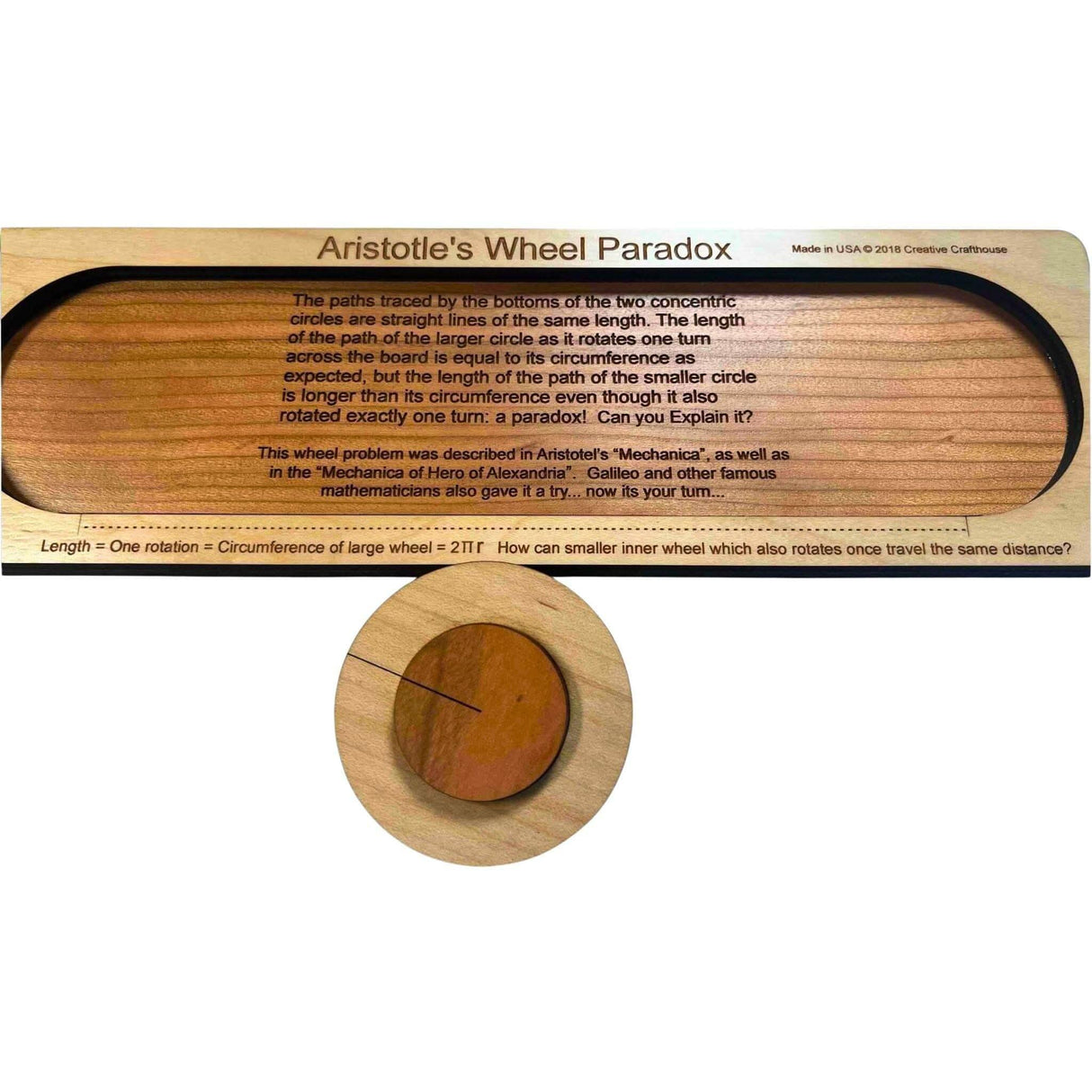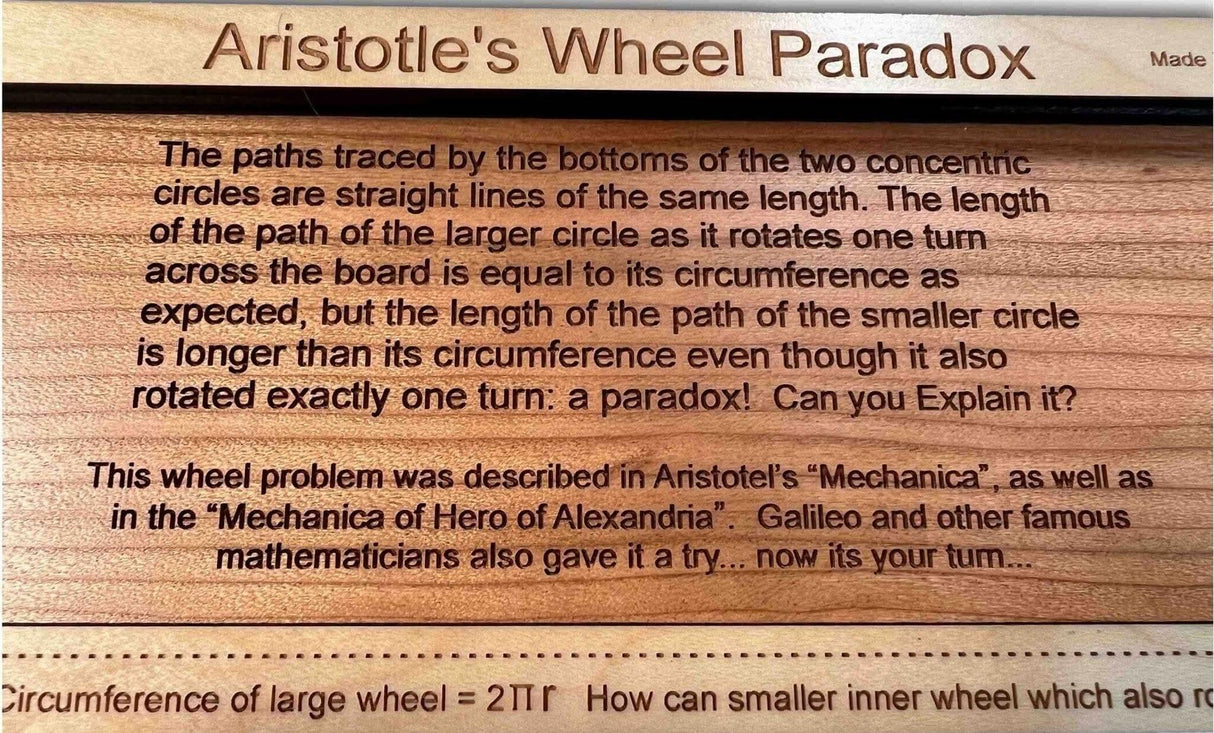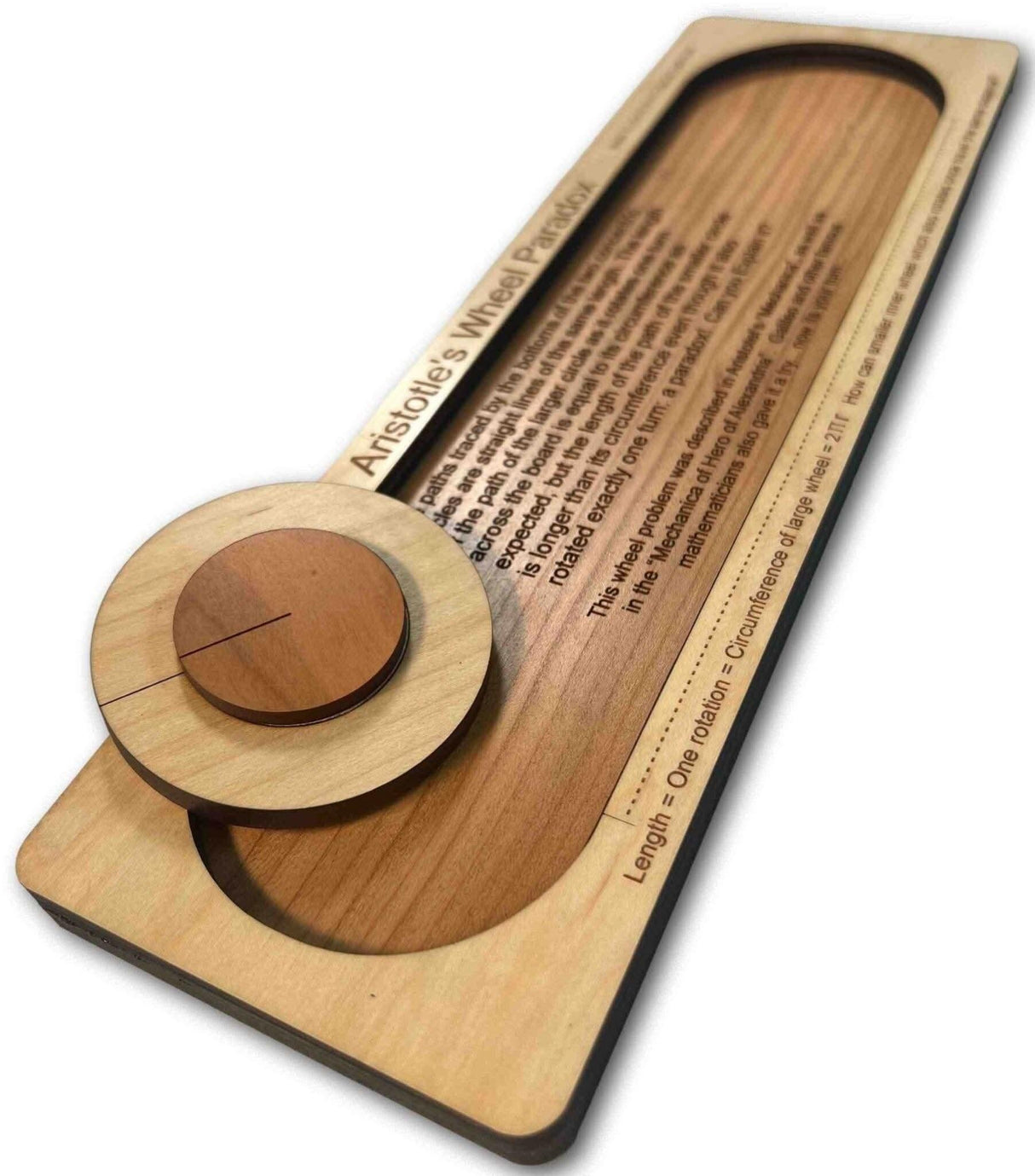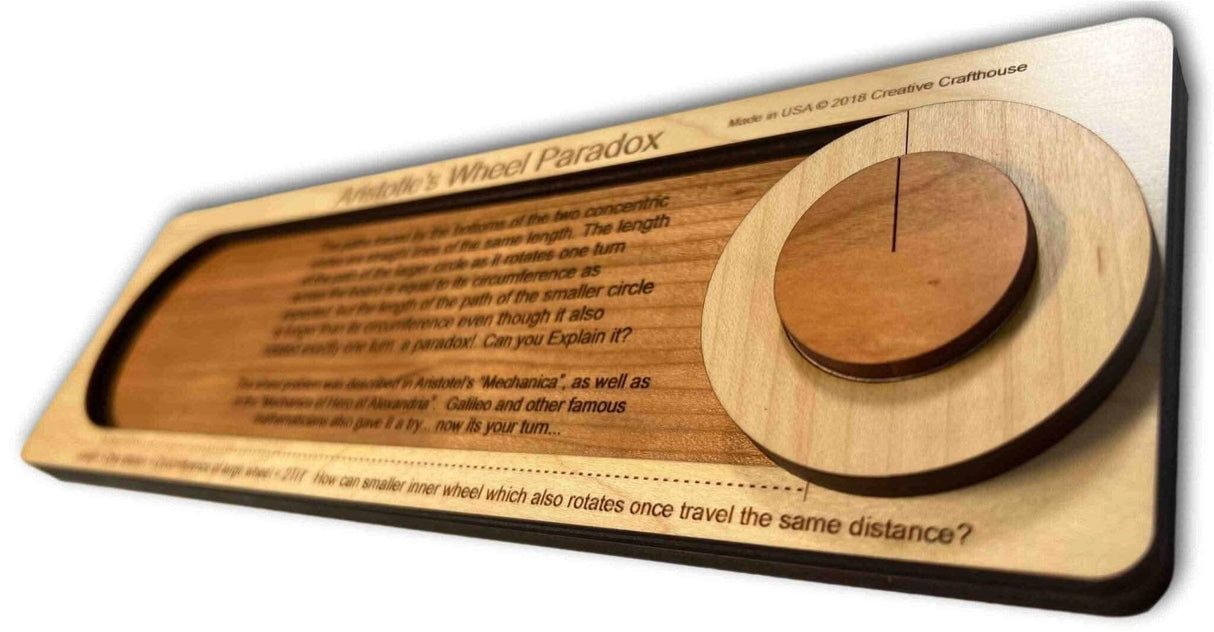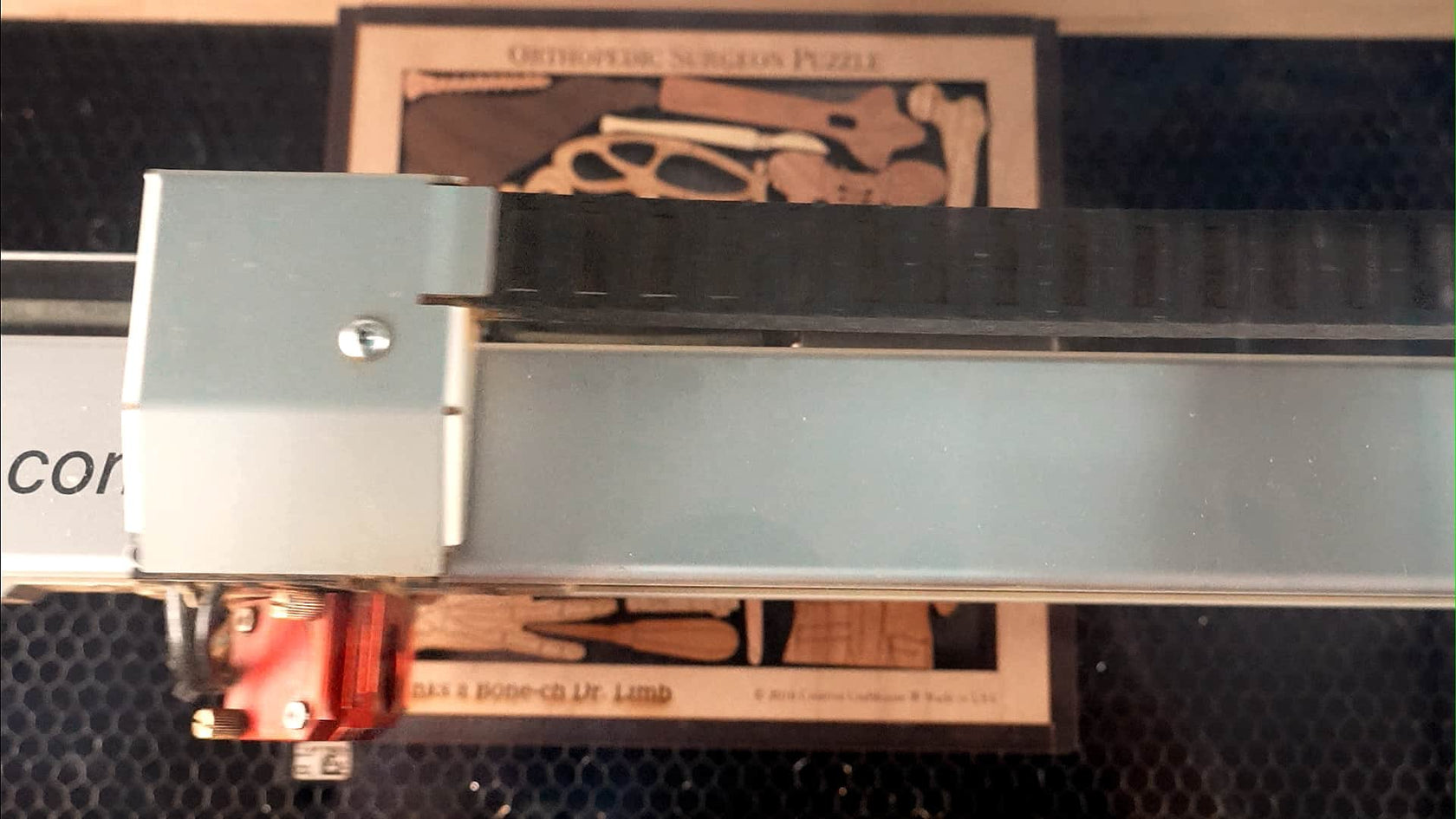Description
Description
Not everyone agrees that Aristotle invented this little paradox, but everyone agrees that it would be just like him to come up with something like this. The paradox involves two different-sized wheels, one inside another. The two rotate in sync and you can see as you turn the wheels to travel the length of the opening in the puzzle that the etched line on the wheels turns one time, thus the circumference of each wheel has rotated over an equal length.
Both wheels use exactly one circumference to trace the same amount of distance - the length of the space in the puzzle. But, clearly one circumference is smaller than the other. Either that means that the wheels have the same circumference, which they don't, or that different circumferences "unroll" to the same length, which they can't.
That can't possibly be right.... The smaller radius can't possibly be equal to the larger one, so what's going on?
To further illustrate the paradox, I have included an separate copy of the inner wheel. We know that when attached to the bigger wheel that it turns one rotation to cover the length of the opening starting at the hash mark. But now take the small wheel and position it at the same starting point and rotate one revolution.... it does not travel the same distance! Such a dilemma.... Can you explain it??
This wooden model made in our Hudson Florida shop nicely presents this paradox in a physical format that will likley leave you or friends or students struggling for an explanation. Great fun for thinkers!
Measures about 11" x 3.5"
Personalize it!
Personalize it!
Click YES above the quantity selector to add a personalized laser engraving to your puzzle or game.
- Perfect for gifts
- Business marketing opportunity
Product Details
Product Details
Suitable for:
Number of Puzzle Pieces:
Difficulty Level:
Puzzle or Game Type:
Play Type:
Made in:
Payment & Security
Payment methods
Your payment information is processed securely. We do not store credit card details nor have access to your credit card information.
Personalize It!
Did you know we can add a custom laser engraving to every puzzle and game? Well, we can. Add a personal touch to your gift with a name or message.
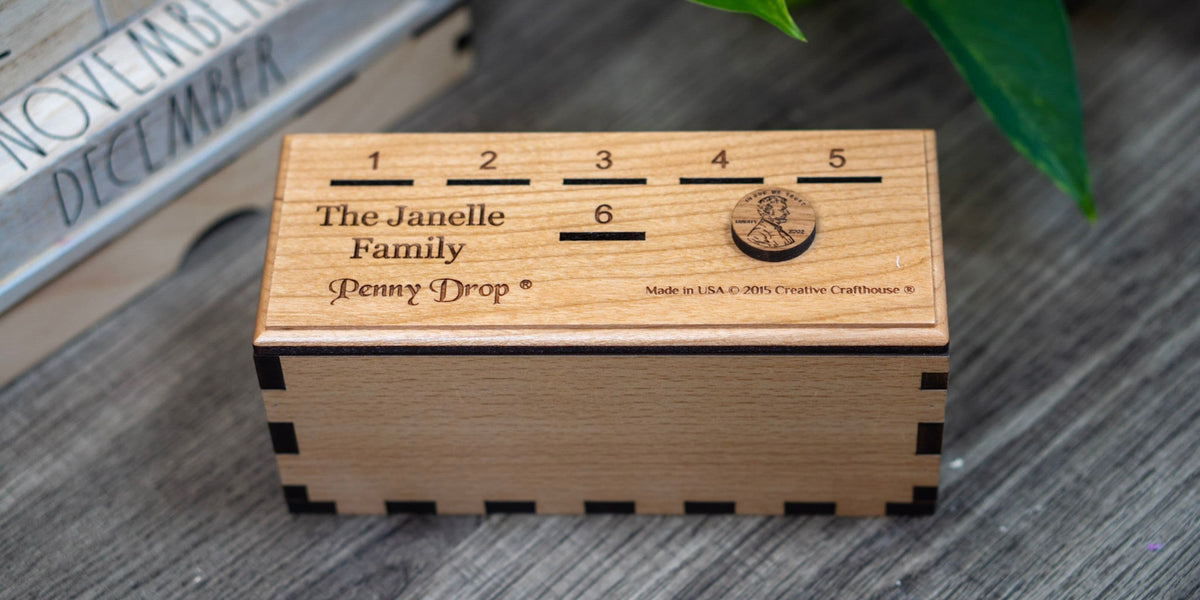
Collections for you
Frequently Asked Questions
Shipping
What countries do you ship to?
What countries do you ship to?
We ship all around the world. If you encounter an issue at checkout, please use the Chat Box to contact us. A real person will assist you.
How long will it take to receive my order?
How long will it take to receive my order?
Standard shipping normally takes 3-5 days. Next-day shipping is available on all domestic orders (for an additional charge). International shipping times vary depending on the product and destination (estimated at checkout).
Expedited shipping is available at checkout.
Returns and Refunds
How do I return a product?
How do I return a product?
Items must be returned within 30 days after receiving your order. Items must be returned in the same condition in which they were received, be unworn/unused, have any tags still attached, and include all the original packaging.
Custom/Personalized items can only be returned if we made a mistake on the customization/engraving.
How long will it take to receive my refund?
How long will it take to receive my refund?
Refunds are processed within 7 days from when we receive the item(s).
